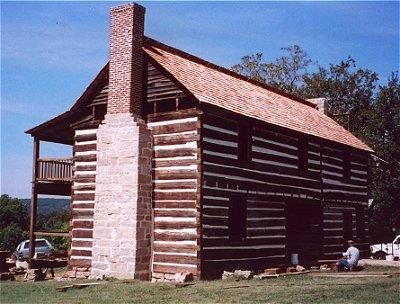The Wolf House is the oldest public structure in Arkansas. Standing high on a bluff overlooking the confluence of the White and North Fork Rivers is an imposing two-story log structure. Most people today view the structure from highway 5 as they pass through the Baxter County town of Norfork. Because of the unchangeable shapes of the mountains and hills, however, the more historic and impressionable view of the structure is from the White River. Either view prompts heads to turn and minds to question and wonder. It bears the appearance of antiquity and importance - old logs for walls that have been carefully hand hewn, and an imposing size that gives it a stature not usually associated with the common image of a "log cabin."
The structure is called the Wolf House for its owner and builder, Major Jacob Wolf. It was built c. 1829 as the county courthouse for what was then Izard County, Arkansas Territory. The courthouse location had moved by the time Arkansas became a state in 1836 and Jacob Wolf's family occupied the house until his death in 1863.
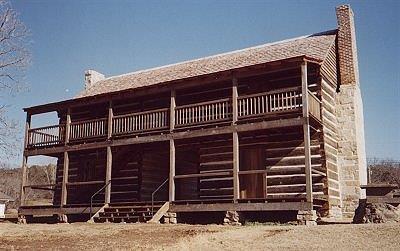

In 1829, Major Jacob Wolf was serving as a representative to Arkansas' Territorial Legislature. He passed a bill that year establishing the town of Liberty (now Norfork) as the "seat of justice". The bill contained instructions for the building of a courthouse on land Jacob Wolf donated to the county. After passage of the bill, the Major proceeded to build the structure that stands today. It is Arkansas' oldest existing public structure. Many of our state's historic leaders visited the courthouse between 1829 and 1834 when the "seat of justice" was moved. The visitors continued to come to Liberty after the Wolf family moved into the house. Major Wolf had a tavern (inn), blacksmith shop, woodworking shop and store at this location.
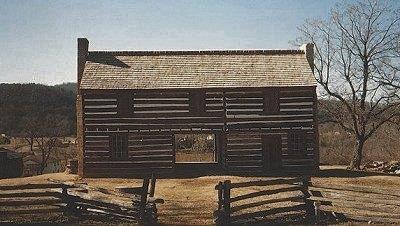
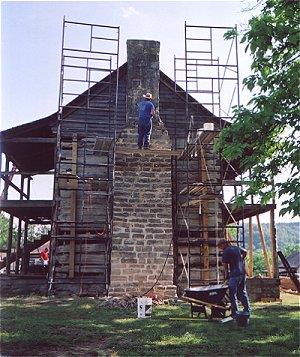

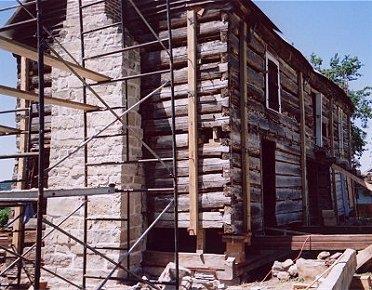
Baxter County purchased the Wolf House and an extensive restoration of the structure was began in 1999 and completed in 2001. Research was conducted relating to the structure's history and 1829 appearance. The East side of the house, now facing the highway, had no porch, but the west side, facing the river, featured a two-story porch which was replicated. The restoration was funded by a County Courthouse Restoration Grant awarded by the Arkansas Historic Preservation Program, an agency of the Department of Arkansas Heritage, and administered by former Baxter County Judge Joe Bodenhamer. The restored building reopened to the public in the spring of 2002 to coincide with Norfork's Pioneer Days festival.

Approximately 70 percent of the original yellow pine logs were saved. Replacement logs were also hand-hewed. Chinking is the slats of wood or stone that is put in between the logs. Dobbing is the mud that goes over that. Restorers said they used as much of the historical mix as they could. When the house was originally built, slack lime and sand or a mixture of dirt was used. Slack lime is a putty created by super-heating raw limestone, then dousing it in water. In the restoration process, modern lime was used, mixing in horse hair for reinforcement.
